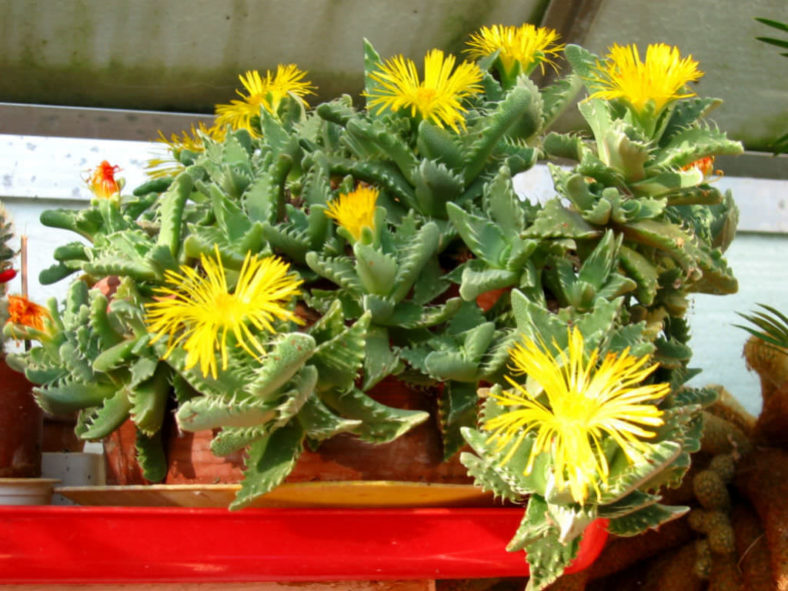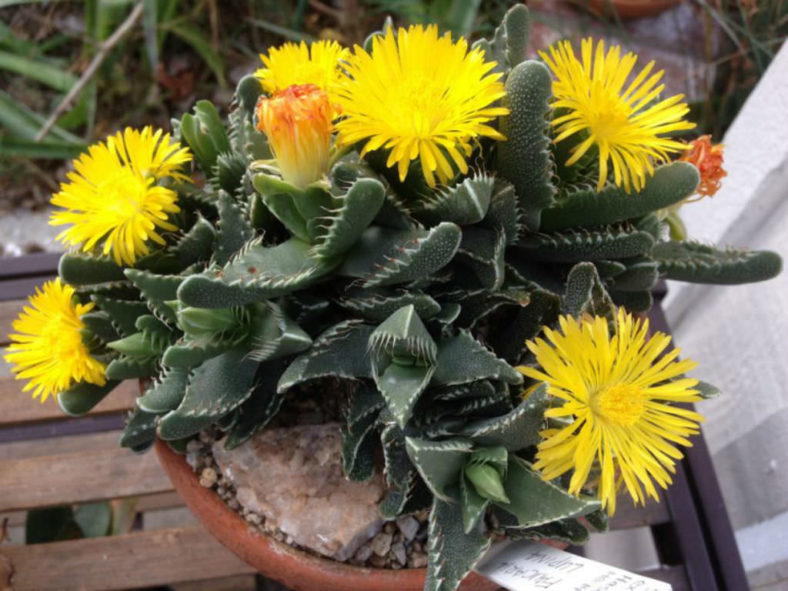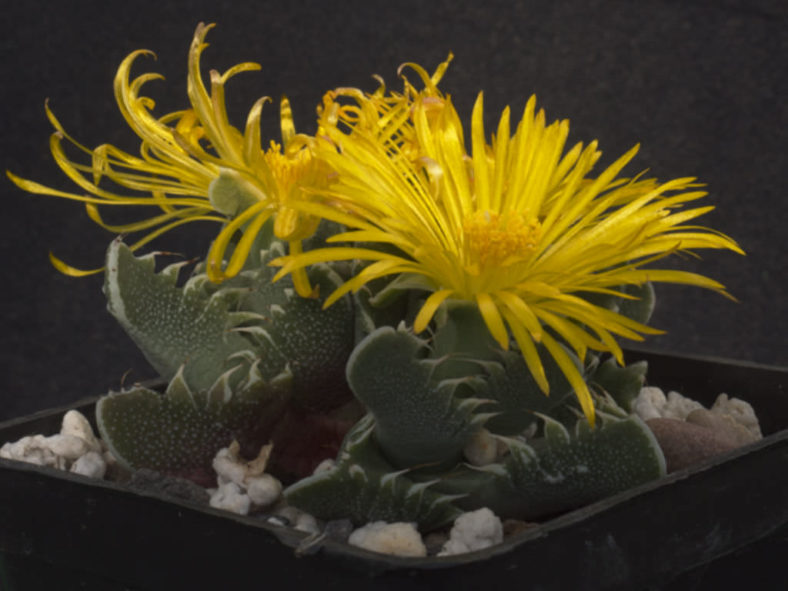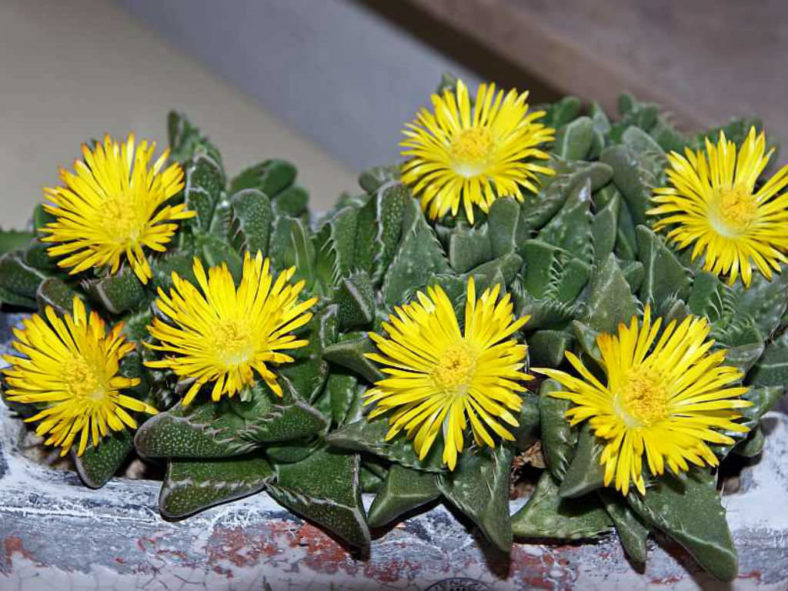Scientific Name
Faucaria tigrina (Haw.) Schwantes
Common Name(s)
Tiger's Jaw, Tiger Jaws, Shark's Jaws, Shark Jaws
Synonym(s)
Mesembryanthemum tigrinum
Scientific Classification
Family: Aizoaceae
Subfamily: Ruschioideae
Tribe: Ruschieae
Genus: Faucaria
Etymology
The specific epithet "tigrina" (pronounced "tig-REE-nuh") means "of or relating to tigers; striped like a tiger" and refers to the paired toothed leaves of this species that resemble the gaping jaws of a tiger.
Origin
Faucaria tigrina is native to South Africa (Eastern Cape).
Description
Faucaria tigrina is a small, clump-forming succulent with green to purplish leaves with up to 10 soft, white teeth arranged in opposite pairs. It can grow up to 6 inches (15 cm) tall. The leaves are thick, fleshy, triangular, and can measure up to 2 inches (5 cm) long.
The flowers are yellow, appear during the day in fall and winter, and can reach a diameter of 2 inches (5 cm).
Faucaria tigrina is very similar to and often confused with Faucaria tuberculosa. Both species have whitish dots
and patches on the leaves, but Faucaria tuberculosa differs by the tubercles over the upper surface of the leaves.

Hardiness
USDA hardiness zones 9a to 11b: from 20°F (-6.7°C) to 50°F (10°C).
How to Grow and Care
The various species make excellent pot subjects and have been cultivated in Europe for over 300 years. Some species, such as Faucaria tigrina, are quite hardy, while others can be prone to stem rot.
Faucarias are mostly spring and fall growers. They need good drainage. They will do fine with a bit of shade, even with extreme heat. When they lack water, like many other mesembs, the stems die, and some rosettes are not connected to the roots by any living tissue. When found in time, the rosettes can be used as cuttings and kept in the shade in a barely moistened medium until the temperature cools down in the fall.
They bloom for several months in the fall or the beginning of winter. The flowers open around midday and close in the late afternoon. They often don't open if the weather is cloudy or if they are in the shade.
Learn more at How to Grow and Care for Faucaria.
Links
- Back to genus Faucaria
- Succupedia: Browse succulents by Scientific Name, Common Name, Genus, Family, USDA Hardiness Zone, Origin, or cacti by Genus
Photo Gallery
Click on a photo to see a larger version.


